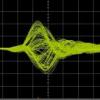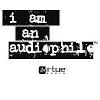Link do wersji Polskojęzycznej
One talented engineer from Poznań, the originator and maker of very good turntable phono preamplifiers in which it is possible to set all the key electrical parameters so that any turntable cartridge can be plugged in, wrote that ‘Turntable making is a fight with and for vibrations.’ And this is as true a statement as can be, as has been known for more than 100 years, by the way. You have to take care of the useful vibrations that are supposed to come from the groove of the vinyl record, but you also have to fight parasitic vibrations. How to reconcile all this? Well, there are many ways. One of them is the use of: soft suspensions for drives, insulation in the form of rubber or cork mats applied to the turntable, internal pressings for vinyl records, outer rings for records, all kinds of absorbers for turntable plinths, and correct susceptibility-mass fitting of the turntable tonearm with the pickup. And today we're going to focus on a device that was created precisely for turntables. And similar applications. It is also dedicated to laser CD drives, audio amplifiers and even DACs. The load capacity of the platform is a maximum of 60 kg. Dimensionally, it even fits large turntables, integrated amplifiers, preamplifiers, power amplifiers and loudspeakers.
I would like to add here that exactly 10 years ago I worked on a DIY project of a table top for turntables. It was a floating structure, relatively heavy (20 kg), cut from a single piece of MDF, 39 mm thick, lacquered with polyurethane varnish in gloss black. The table top there was suspended on three metal-rubber vibration isolators from the Italian-German company ELESA+Ganter. The hardness of the rubber was a choice between 40 and 55 degrees Shore A. I bought both sets and chose by trial and error the softer rubber rated at 40 degrees Shore A. Then, for the first time, I was able to isolate the influence of floor vibrations from the turntable's operation and could throw a solid party while listening to black disc music.
However, let's return to the reviewed platform. The first unit tested with it was a DIY turntable of my idea, design, and execution. I know its capabilities and have been using it since 2015. This is an interesting experiment in that the turntable is a rigid design with a direct drive transplanted from a very good historic German-made turntable, which features virtually unmeasurable natural vibrations. This is an EDS1000 motor from a Dual CS701 turntable transplanted into a DIY plinth. It is a compact design, begging to be mounted to a rigid plinth. And this is precisely the way it was made. The idea was to use a nearly 12-inch tonearm known from Japanese radio stations, the so-called broadcast tonearm, and Denon's 103-series cartridge (103-SA/103-R and the regular 103), possibly a SPU-series Ortofon.
You can read about my turntable on Audiostereo forum – BLOGS – ‘Kangi's Blog’:
https://www.audiostereo.pl/blog/kangie
I mention this for a reason, as in the initial phase of the project I lacked vibration-damping feet, and before I used the dedicated Audio Technica AT605 feet, I had used stiff pads commonly used for supporting washing machines and tumble dryers – meaning – hard and rigid plastic cylinders, which are in no way suitable for use under rigidly suspended turntables devoid of elastic elements to dampen parasitic vibrations. I did similar experiments using comparably built LEGO DUPLO bricks of the appropriate height. Placing the turntable on four such blocks and on a rigid oak table, there is virtually no isolation of the turntable drive from the table. And now is the time for tapping the table and listening to the sound effects from the speaker columns. Unfortunately, the taps can be heard. The plinth of the turntable is made entirely of two #22 mm MDF sheets glued together with single-component polyurethane glue and veneered with real wood – Brazilian rosewood – then sanded and varnished with clear lacquer. The plinth itself has some ability to absorb vibrations due to the structure of the material. It is known to be wood chips compressed under high pressure and temperature in a direct resin environment. The directionality of wood fibers is arranged completely randomly, hence the material is reasonably resistant to thermal elongation and warping, and is a very good material for the construction of speaker boxes and turntable plinths. MDF forgives a lot, unlike solid wood, whose fibers have inherent structural behavior and can be tricky, as professional luthiers and real wood furniture makers know. MDF is easy to machine and well machinable. Pure benefits. Why am I writing so much about it? Well, that's because the said anti-vibration platform from ROGOZ AUDIO of Katowice, Poland, is built precisely from boards made of MDF, HDF and plywood. The differences lie in pressing power. HDF is harder than MDF. As is well known, any solid of a given size and mass has its resonant frequency. Considering the type of material (granite, marble, wood, MDF/HDF) – the resonant ones are placed in different places on the frequency diagram. Experienced hobbyists tap on loudspeakers, turntable plinths and listen for any kind of ‘ringing’ that is not desirable. If you hear a hollow sound, that's a good sign. This is exactly the case with the VOLTA/BBS anti-vibration platform, whose shelves are glued from different materials, a ‘sandwich’ design.
The first impression after unboxing is of very sturdy fabric dividers made of dense foam and stacked. Each part of the platform has a separate place in the foam. Taking the 30-millimeter-thick shelves in hand and viewing it up close, you have the impression of dealing with a high-end product. Natural maple wood veneer, glued, sanded and with applied clear lacquer polished to high gloss. By virtue of my profession for many years, I am very sensitive to the quality of paint coatings. I can spot orange peel from several meters away. Here we are dealing with the highest possible quality and a PREMIUM class product. Guessing that the scale of production of such platforms is not huge, in addition to CNC cutting, you get a produce of intense manual labour – including varnishing. The end result is quite impressive. The shelves are heavy, rigid and perfectly fitted dimension-wise.
Aesthetically pleasing chamfers at the bottom and top of the platform and the ROGOZ AUDIO company emblem. The dividers are made of turned, ground and polished conical spikes, made of very high hardness steel. Do not forget to arrange carbon fiber ‘caps’ on them. They are halves of a sphere with an inner blind hole in which the tip of the spike rests.
On top of this, another shelf of the platform is placed. Meaning, we are looking at a three-point, or actually six-point support (two levels) from the bottom side through a carbon fiber intermediate element, which is in contact with a steel socket made in the lower plane of the platform.
We are looking at a BBS (Balancing Board System) which is protected by a patent No. P.404137. The system allows swinging movement in all directions, i.e., front-back, left-right. Up and down is not an option, since the movement is swinging on the sphere half. The support on each level is achieved in three points, that is, the lack of resonance of the fourth point, which, if used, should be individually tuned so that it does not resonate. Here, three-point support has an advantage over four-point support. Of course, all the spikes are screwed and leveled at the factory. I also have the table leveled and now that everything is prepared, you can place the turntable.
My plan was to first put the AT605 dedicated turntable feet between the turntable and the platform. I turn on the music. I then take turns tapping the table, the plinth, listening to the speakers to see if I can hear the taps, and then I listen to the music normally. After two days, I pull out the AT605 feet and put LEGO DUPLO plastic blocks between the turntable plinth and the platform, tapping in the same way as before and listening to music. Here I must admit that the effect of the platform can be heard right away. Especially when you play very loud music with a powerful bass beat – whether it's hitting a bass drum or tom-tom drums. I have this vinyl record Sigi Schwab & Percussion Academia ‘Silversand’ where at high-volume playback the turntable excites and then you need to reduce the volume.
It is not simply a matter of the influence of the sound wave generated by the speakers and reflected from the walls of the room and thus the reception of this wave by the vinyl record and then by the pickup, because on the other turntable I do not experience this effect. It is also due to the audibly lower bass, blow and so-called ‘smack’ in the latter turntable. So I am 100% sure that the ROGOZ AUDIO VOLTA/BBS platform does its job, as it isolates the turntable properly from the table. I gave up on the LEGO DUPLO tests and returned to the Audio Technica's feet.
Over the course of several days and many hours of listening, I made a note in my head and memory of certain sound, tone and spatial aspects that have changed. Obviously, not having the competence to carry out specialised measurements, not having professional control and measurement instruments capable of picking up vibrations or any technical nuances and documenting them ‘on paper’, a person must rely on his own pair of ears. Here the responsibility and competence lies with the manufacturer, who developed the platform and patented the technical solution. Aside from the trivial tapping of plinths and trying to assess whether the sound is louder or not, or maybe not audible at all – let's finally focus on the reception of music. I noticed that the sound was calmer, more fluid and dense. It's as if the sound has become more homogeneous, balanced. It can be considered that the midrange has thickened and the treble has lost a bit of sharpness, but not brilliance. Here we should mention the grind of the needle of the factory Denon DL 103R turntable pickup, which has a spherical grind and the tip is glued into an ordinary aluminum tube, which is the technologically simplest grind and an arrangement not capable of reproducing the treble sounds as well as the sophisticated Micro Linear or Shibata grinds. Something else is important in this pickup. What is important here is the midrange, its load and bass attack. As a friend of mine said – the brilliant thing here is the ‘singing’, rather than breaking down the sound into its elements and trying to put together music from them.
I also performed tests with a Micro Seiki DD-40 turntable equipped with two tonearms. I was most curious about the sound from the Audio Technica 33 PTG MKI pickup, which plays insanely analytically and has an outstanding upper band due to the internal generator design and because of the very sharp cut of the Micro Linear needle tip, glued into a rod made of ultra-light and -hard boron. The observations are similar. The sound calms down, is less random. It's not that it lacks dynamic differentiation, it just drags more, not in the sense of slowing down the sound, just better plasticity and greater refinement. It's almost like trying to lift the turntable during playback. I have made several such attempts – with due caution. The changes in sound were noticed by both myself and the listeners I hosted in my home at the time. Here the difference is also that when holding the turntable in my hands, I cover the front of the turntable with my whole body and protect the turntable from the influence of the return sound wave. So it is not absolutely the same. However, the function of the platform is decoupling, isolating the turntable from the foundation, isolating parasitic vibrations from the floor and table. It is known that some people put turntables on brackets bolted to the walls of the room. We then obtain isolation from the floor, but you need to remember that the wall, despite having a huge own mass, also takes in sound waves and tends to transmit vibrations. Well, unless you set up an acoustic system behind the turntable that absorbs sound waves. On the other hand, it is then necessary to isolate the turntable from the supporting structure, usually a frame, which, as you know, is usually made of closed steel tubes/profiles, which, not being backfilled with any aggregate such as sand or shot, transmit parasitic vibrations.
The second function of the platform is to present and display equipment such as turntable, amplifier, CD player. Choosing the color and wood properly will provide a great result.
After these several days of listening, I decided to take the ROGOZ AUDIO VOLTA/BBS platform and listen to how the system sounds without it, and unfortunately the lack of this platform is audible. I am aware of psychoacoustic issues and how people react to the sound of different systems, especially when they see what kind of system is playing music at the moment. But that's not the point. It's all about what we hear and what the perception of music is after a long time, when the new equipment is removed from the system. And I heard that I began to miss something. Maybe not so much in quantity, but in quality. These are nuances to some, but to me and a few of my audiophile friends, they are important things, especially in an analog audio system that is very sensitive to almost anything related to acoustics. The isolation of the turntables from the ground is exemplary in this case. I think that the full potential of such a HI END platform will be exploited by owners of very advanced audio systems, especially if they have proper decoupled audio tables and, most importantly, a room dedicated to music, equipped with a set of acoustical systems that will squeeze the maximum, as much as possible, out of any equipment and room. It is known that some of us hobbyists do not like to compromise; they want to go all the way in this hobby and at any cost. So, by all means, it is a piece of equipment designed for both the less and the more advanced audio systems, with no bottlenecks or limitations to the sound quality.
I also had a plan to test the platform's effect on a Dual Mono tube amplifier built with four transformers (two power and two speaker) and 8 electron tubes, possibly a solid state, and two CD drives. Because of the height of the platform (116 mm), this would require rearranging the hardware on my table, replacing and rewiring and – most importantly – would require hours of listening, and then taking the platform and comparing whether the change is positive or negative. Shorter listening and comparisons are out of the question for me, so I decided to end the tests and send the platform back to the manufacturer/distributor.
Łukasz Piechocki
Distributor/ manufacturer: ROGOZ AUDIO
Price (incl. 23% VAT): 1839 EUR
A description of the BBS platform and patent realised by the manufacturer can be found at the link:
TECHNICAL DESCRIPTION
Overall height: 116 mm
Overall width: 590 mm
Overall depth: 540 mm
Leg profile: sandwich MDF+MDF+HDF 30 mm thick
Top shelf: sandwich MDF+MDF+HDF 500 x 470 x 30 mm / 420 x 430 x 30 mm (surface without chamfer)
Bottom shelf: sandwich plywood + plywood 500 x 470 x 30 mm
Maximum load: up to 60 kg
A COMPLETE SET INCLUDES
1 platform
double BBS between two shelves and two bases
APPLICATIONS
CD players;
Analog gramophones
Power amplifiers
Integrated amplifiers
Preamplifiers
Loudspeakers
English translation of the Rogoz Audio VOLTA/BBS platform review by Audiostereo magazine.
Text: Łukasz Piechocki
Translation: Lingua-City
Link do wersji Polskojęzycznej
.png.2fedbaeed142d9ffa7ad27f243687120.png)
























.thumb.png.b37f829af63b783071adf92e124d4239.png)



